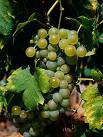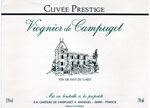 How about a little role playing? Let’s say you’re a savvy bevvy marketer trying to get a leg up on the next big wine fad. Let’s say you want to go about this by waxing overly poetic about a specific wine grape, intending to give it a nudge from the status of ‘almost totally unknown’ to ‘up-and-comer’ with the goal of making it the ‘it’ grape of its generation.
How about a little role playing? Let’s say you’re a savvy bevvy marketer trying to get a leg up on the next big wine fad. Let’s say you want to go about this by waxing overly poetic about a specific wine grape, intending to give it a nudge from the status of ‘almost totally unknown’ to ‘up-and-comer’ with the goal of making it the ‘it’ grape of its generation.
With over two thousand varieties of vitas vinifera to choose from, do you:
- Pick a varietal that no one can spell, let alone pronounce?
- Choose a grape so low-yielding and hard to grow that the only place it’s ever produced truly world-class wine is inside about forty acres in France?
- Go with a varietal with such a perfumed nose and exotic taste that many folks are immediately turned off by it? And are pole-axed when trying to match it to food?
- All of the above.
- None of the above.
Maybe the last one, huh?
Unless It’s Viognier…
In which case, it’s number four, hands down. Viognier, a strange little grape hailing from a tiny slice southern France, has required a dedicated gang of Condrieu-ophiles to chant its praises to an American congregation. Consider first that world’s most famous viognier, Château-Grillet, relies on vines with an average age of forty years. Then consider that forty years ago, the sum total of California acres planted to viognier was zero. It’s little wonder that most domestic viogniers produced thus far have been cloying, alcoholic and overpriced. Most, not all; it’s changing in part because the viognier vines are aging and winemakers are getting a handle on the varietal’s quirks and qualms.
But to really experience the essence of this grape’s ambition, it’s best to begin at the beginning: the Rhône Valley.
Certainly, I’d steer you first toward the mystique, panache and bling-bling—Château Grillet—but at $100 a bottle, it’s a bit dear for experimentation. Instead, I’m pushing an old winery harvesting middle-aged vines in a new appellation.
Quaint and beautiful, Château de Campuget has been producing wines in Costières de Nîmes since 1640—much longer than Costières de Nîmes knew it was Costières de Nîmes. Formerly called Costières de Gard, the region changed its name shortly after achieving AOC status in 1986, around the same time it became attached to the Rhône, having previously been part of Languedoc.
That’s a story in itself, kids; I mean, you can lie about your winemaker’s pedigree, lie about the source of your grapes, lie about the sulfites you use—but how do you lie about where you’re located?
Fact is, the region lies directly between Languedoc and Rhône, and it was determined in 1989 that due to terroir, the wines were more typical of the latter; thus, le changement.
Château de Campuget Cuvée Prestige Viognier
This sumptuous sip is the handiwork of winemaker Delphine Crouzet, who sees her viognier harvested at its mid-September peak, then vinifies the juice in oak for six months prior to bottling. It may here be confessed that Château Grillet sees eighteen months of oak which, in fact, robs the grape of some of its characteristic vitality. Crouzet’s fruit bomb faces no such criticism, showing gobs of varietal integrity; fully scented with springtime fragrance—cherry blossoms, honeysuckle and orange marmalade—yet retaining a crisp acidity, firm minerality and a youthful, tropical backbone. And meanwhile costing about a fifth of what Grillet can fetch.
You hate to call anything this unctuous and juicy an ‘entry level’ wine, but if you happen to be a viognier virgin, Crouzet’s vibrant vin is a wonderful way to pop your cherry blossom.
Château de Campuget Cuvée Prestige Viognier, Costières de Nîmes, 2010, about $15: A penetrating bouquet of blooming acacia, honeysuckle and leading to layers of flavor; papaya, melon, peach and apricot. Buttressed by racy acidity, the wine is a palate cleanser from first taste to its dry and opulent finish.
*
About the winery: Château de Campuget is managed by Jean-Lin Dalle, assisted by his son Franck-Lin—named after Benjamin Franklin. It’s nice to know that Americans are not universally despised in France, and that some French people, are, in fact, still star-struck over Poor Richard’s last European tour in 1785.












You are illegally using our image of Viognier grapes on this page: https://intoxreport.com/2011/08/29/chateau-de-campuget%E2%80%99s-vivacious-viognier/
Please delete it – thank you.
Sue me. I could use the publicity.
No problem. I haven’t tried any yet, but I do have a blttoe of the 2008 Cave de Pomerols Picpoul de Pinet and the 2007 Altovinum Evodia Old Vines Garnacha that I need to drink though. Very excited to see how they are. Thanks again for the great recommendations.